Southern California is home to 2 of the 16 presidential libraries. We have often visited the Reagan Museum, known for its interesting and informational exhibits. Probably the first one we saw was about baseball, but we’ve been to many others through the years. Leonardo da Vinci and Egypt’s Lost Cities are two that come to mind.
When friends wanted us to see an exhibit at the Nixon Presidential Library, we were eager to go. I always believed this library was near the beach, but it’s actually 20 miles inland in Yorba Linda.
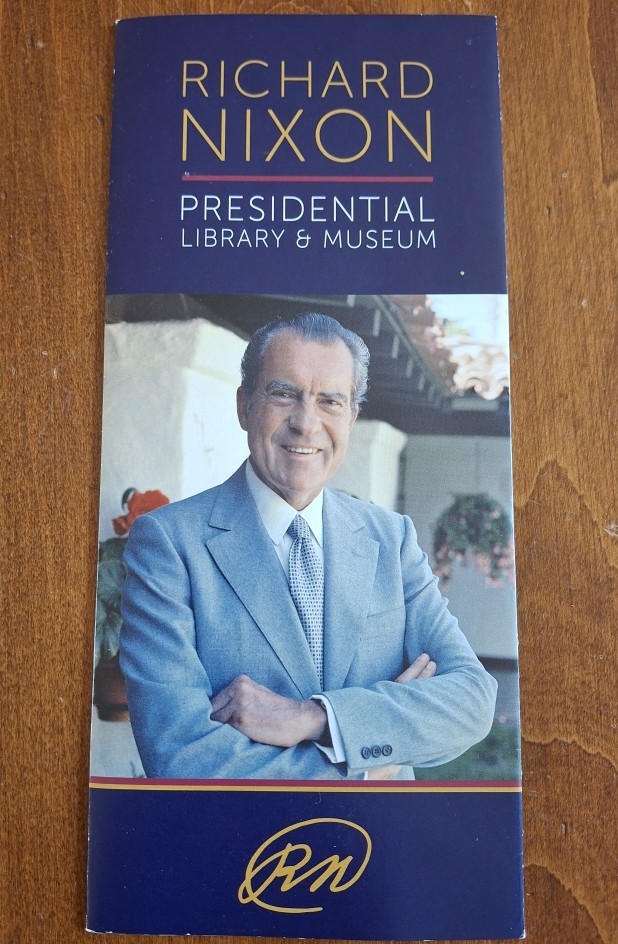
Nixon is the only president ever to resign. The museum places that event right up front. I came away with the feeling he was an honorable man who truly felt terrible about letting the country down. Although probably not the most historic recap of the museum, I’ll show you what I liked.
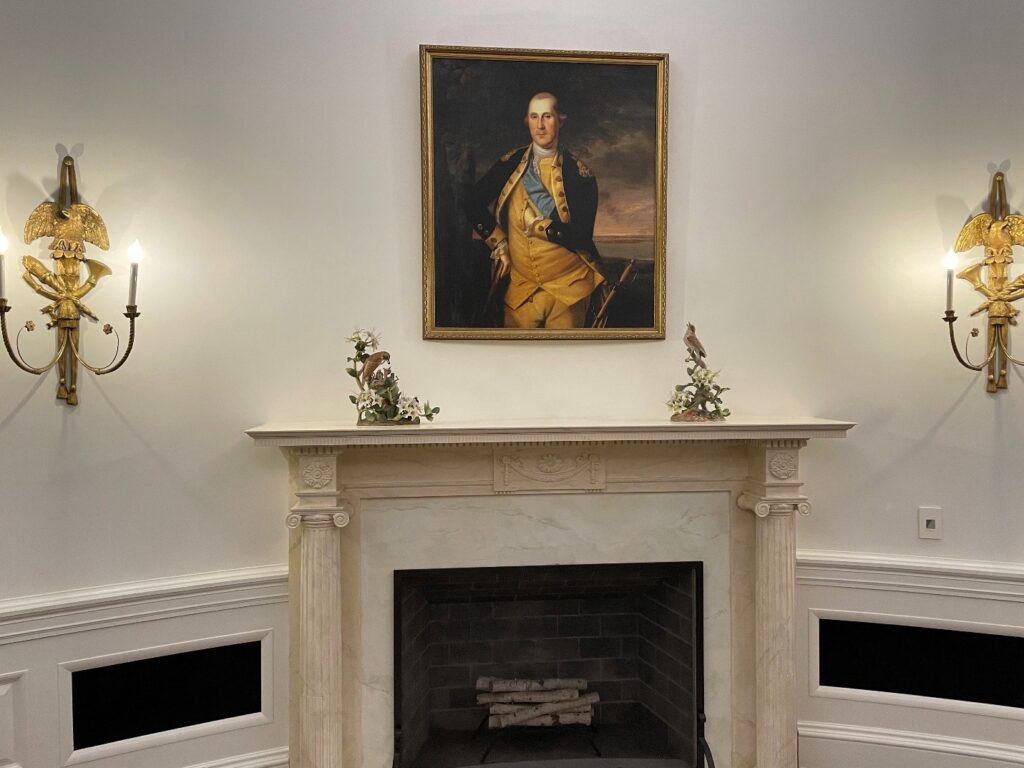
Replica of Nixon’s Oval Office mantel with a portrait of George Washington above. Those bird figurines were a big deal to the Nixons. They were all over the place.
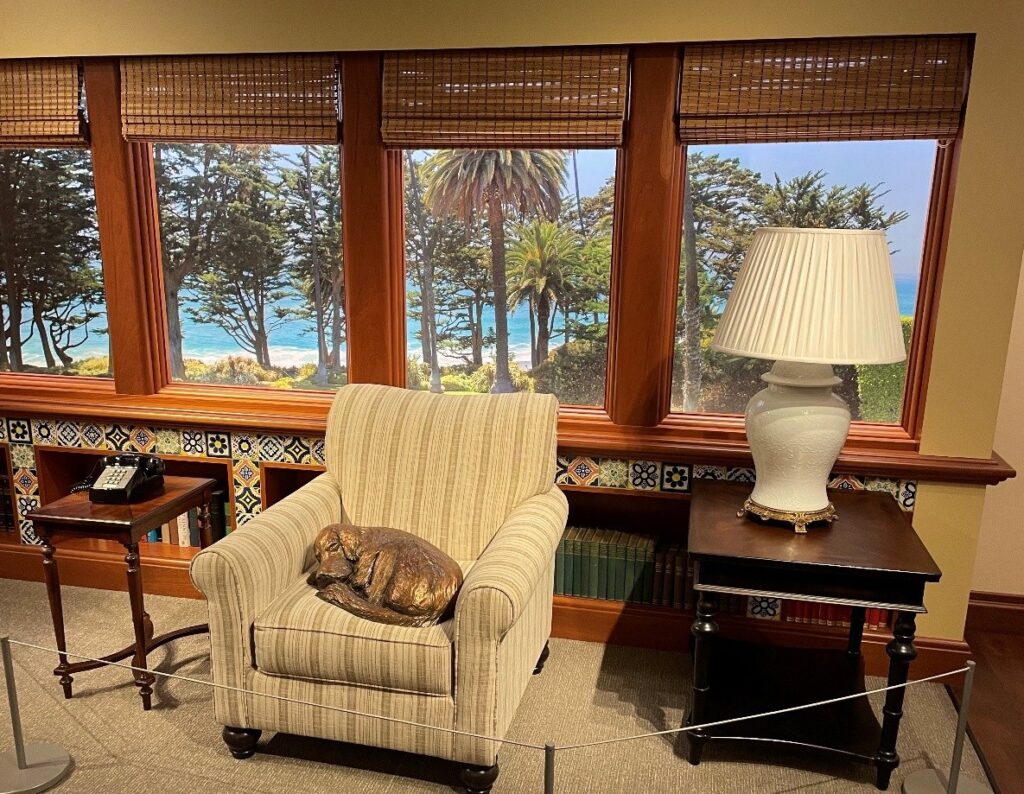
This is a replica of a room in the Western White House.
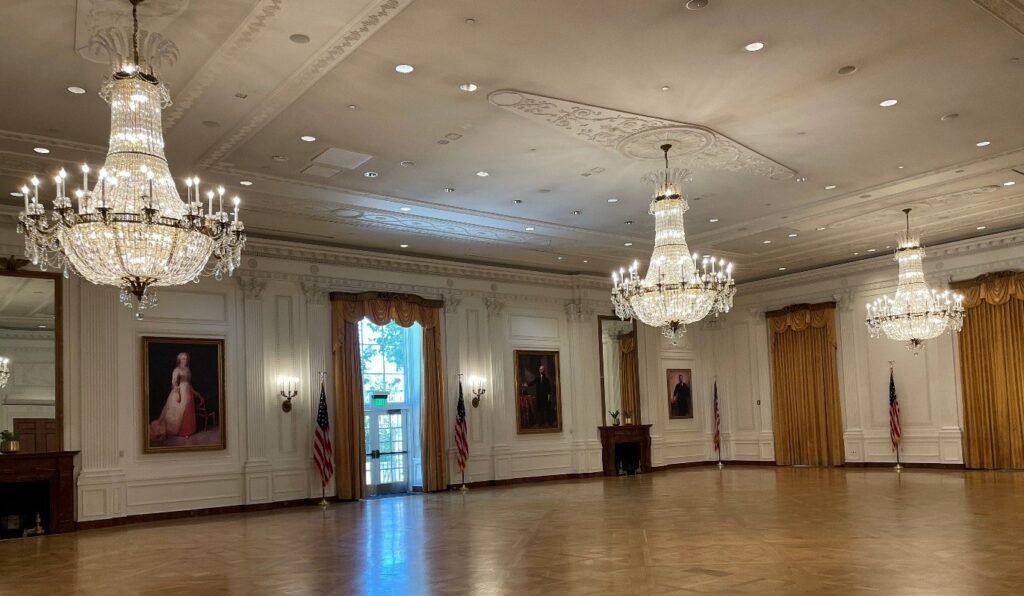
Originally opened in 2004, the Nixon Library’s elegant replica of the East Room.

A view of the reflecting pool area and building exteriors.
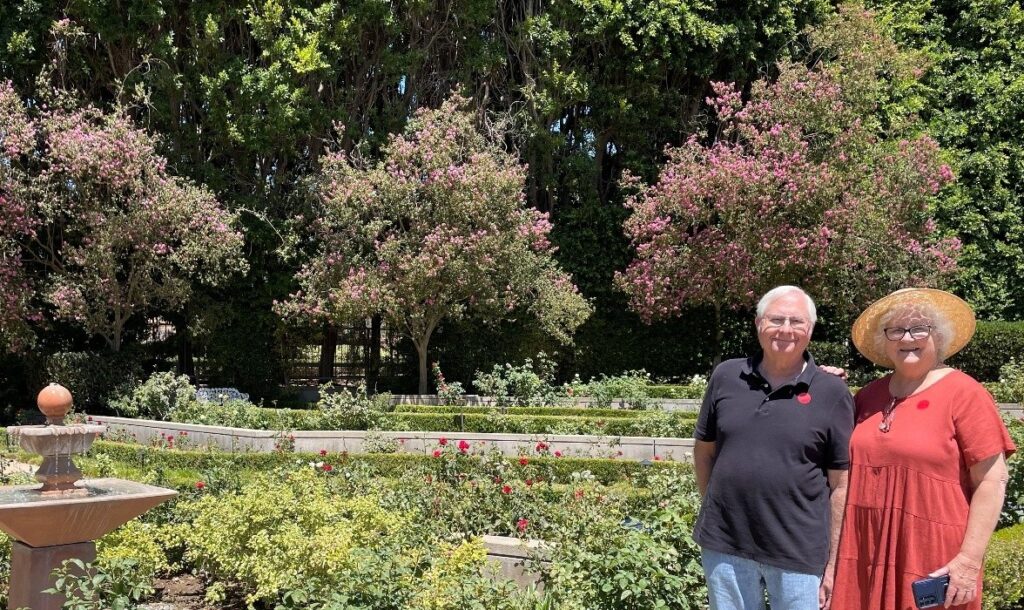
Our stroll through the gardens brings us to the best part of the library (as far as I’m concerned). Richard Nixon’s actual boyhood home on the exact location where his father Frank built it in 1912.
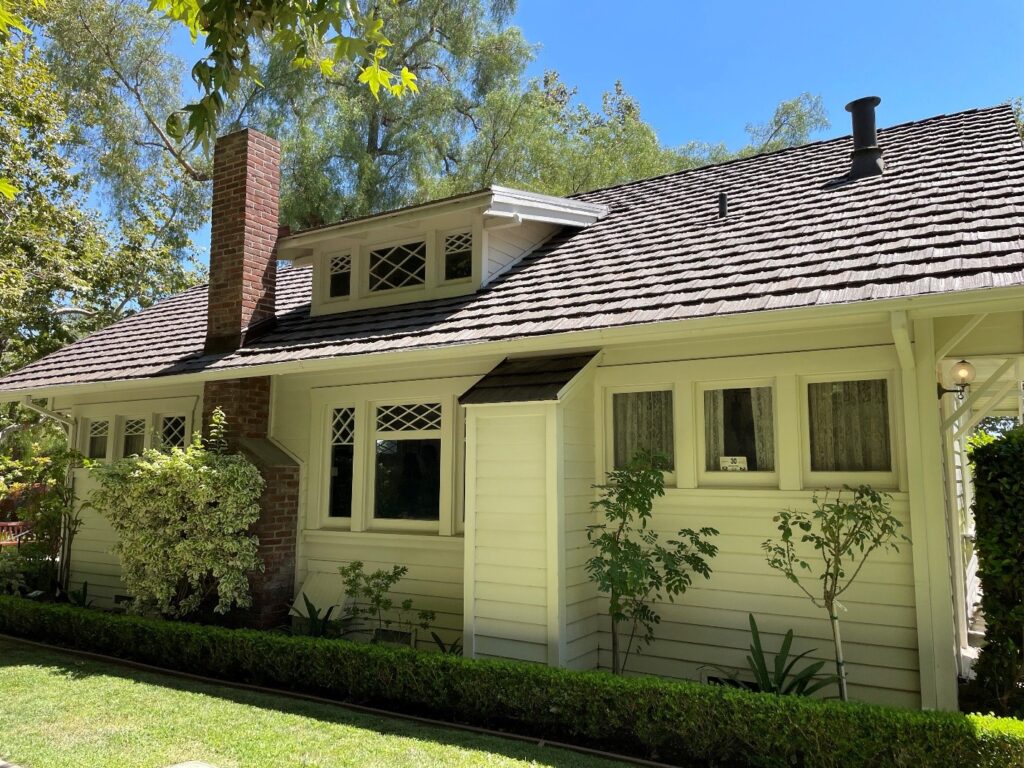
We walked along the side.
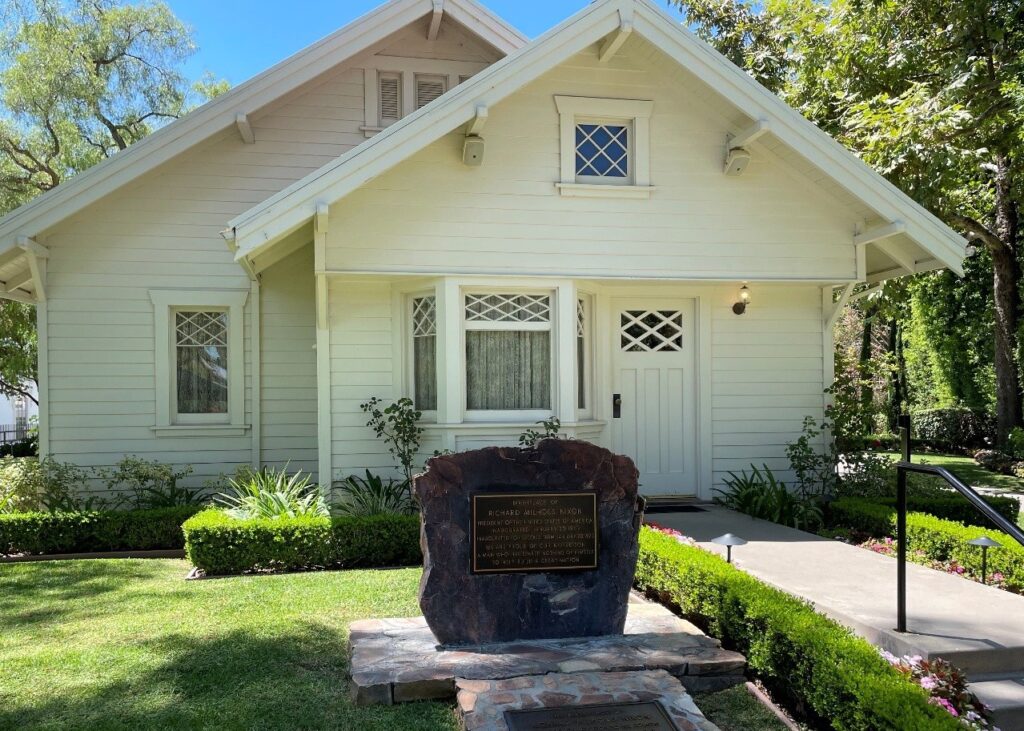
And came to the front door of this Sears House. I have always wanted to see the inside of a Sears House. What were they? Back in the day, a person could order an entire house right out of the Sears Catalogue. The house would come on a train car with instructions. There could be 25 tons of materials and more than 30,000 parts. Just like Nixon’s dad, new owners built the homes themselves, often enlisting friends and family to help out much like traditional barn-raisings.
When this site was selected for the library, there was an attempt to pivot the house so the front door faced the reflecting pool, but the authenticity of leaving the house exactly as built prevailed.
Richard’s oldest brother, Harold, born in 1909, died of tuberculosis at age 23.
Richard Milhous Nixon was born in this house on January 9, 1913. The only home birth among the Nixon brothers was caused by a severe storm.
Francis Donald was born in 1914.
Arthur, born in 1918, died at the age of 7 after contracting tubercular encephalitis.
Youngest brother, Edward, was born in 1930. Following Richard’s death in 1994, he was the last surviving Nixon brother.
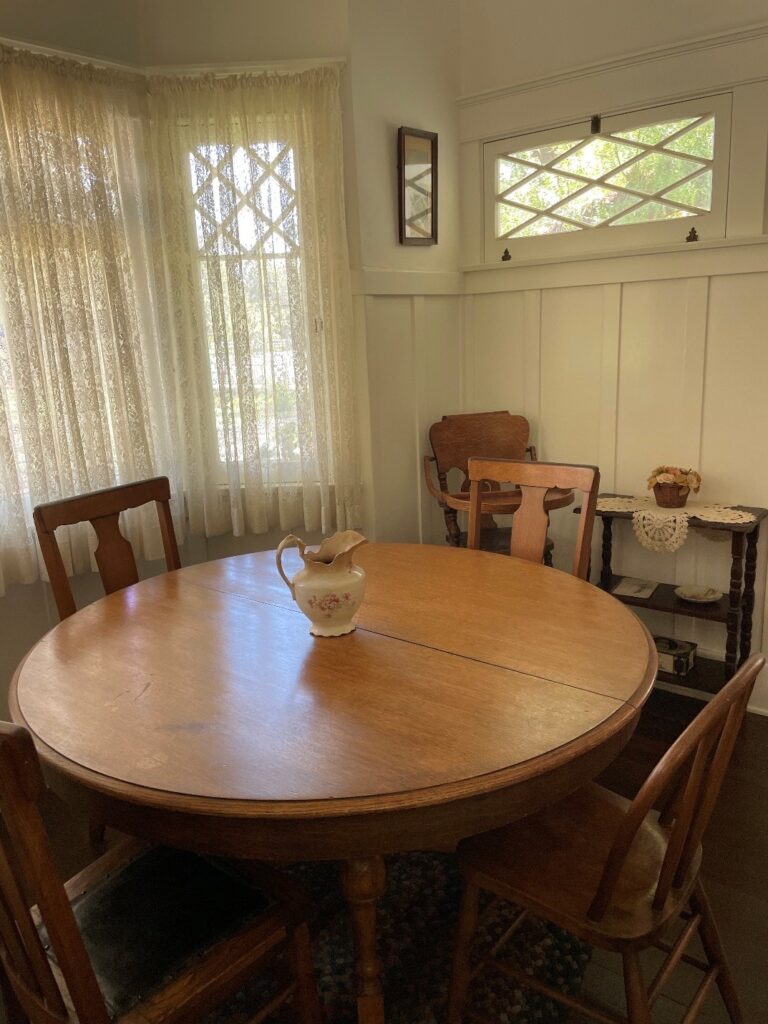
The parlor table sits right inside the door. The furniture in the Nixon farmhouse is all original and includes the high chair he ate in as a baby (in the corner) and the bed where he was born.
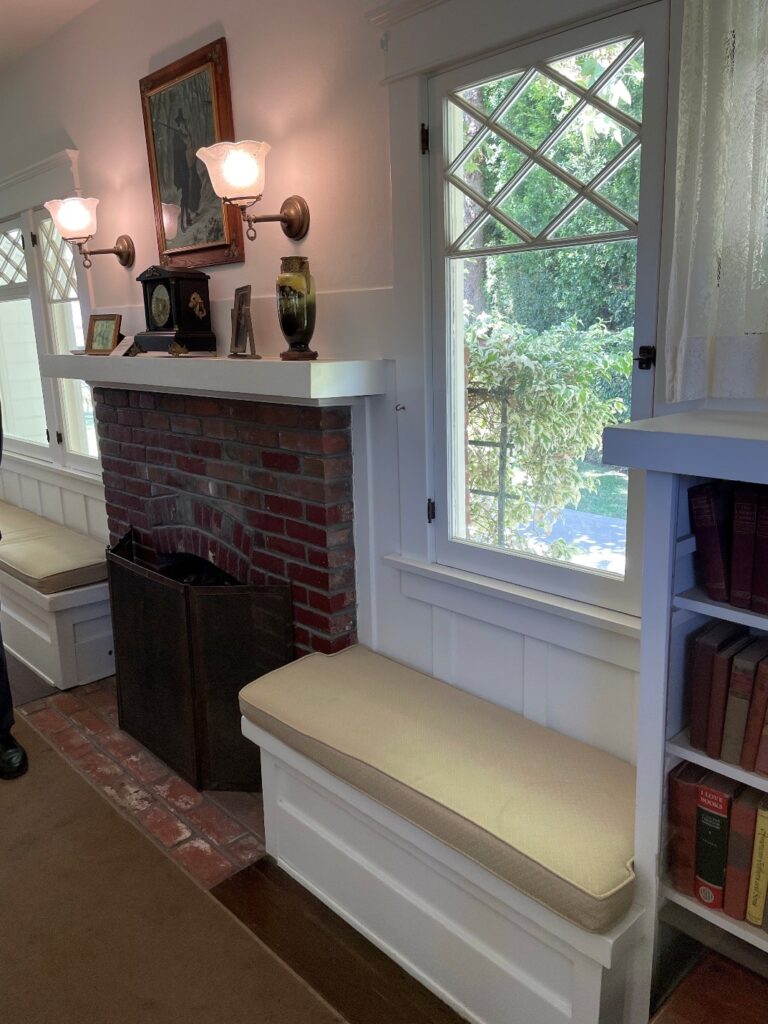
The fireplace is on the north-facing wall, the path we walked on is outside the windows.
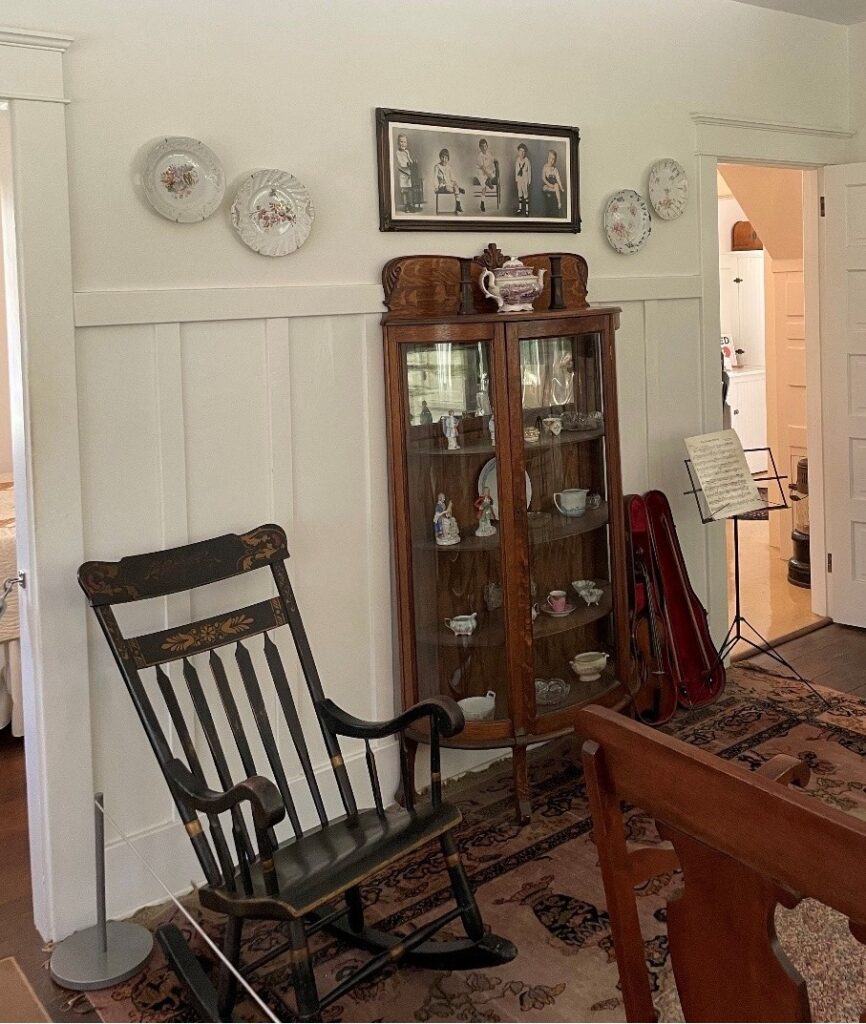
The south parlor wall. The doorway on the left leads to the parents’ bedroom. The one at right is the entry to the bathroom. A picture of the five Nixon brothers hangs above the curio cabinet.
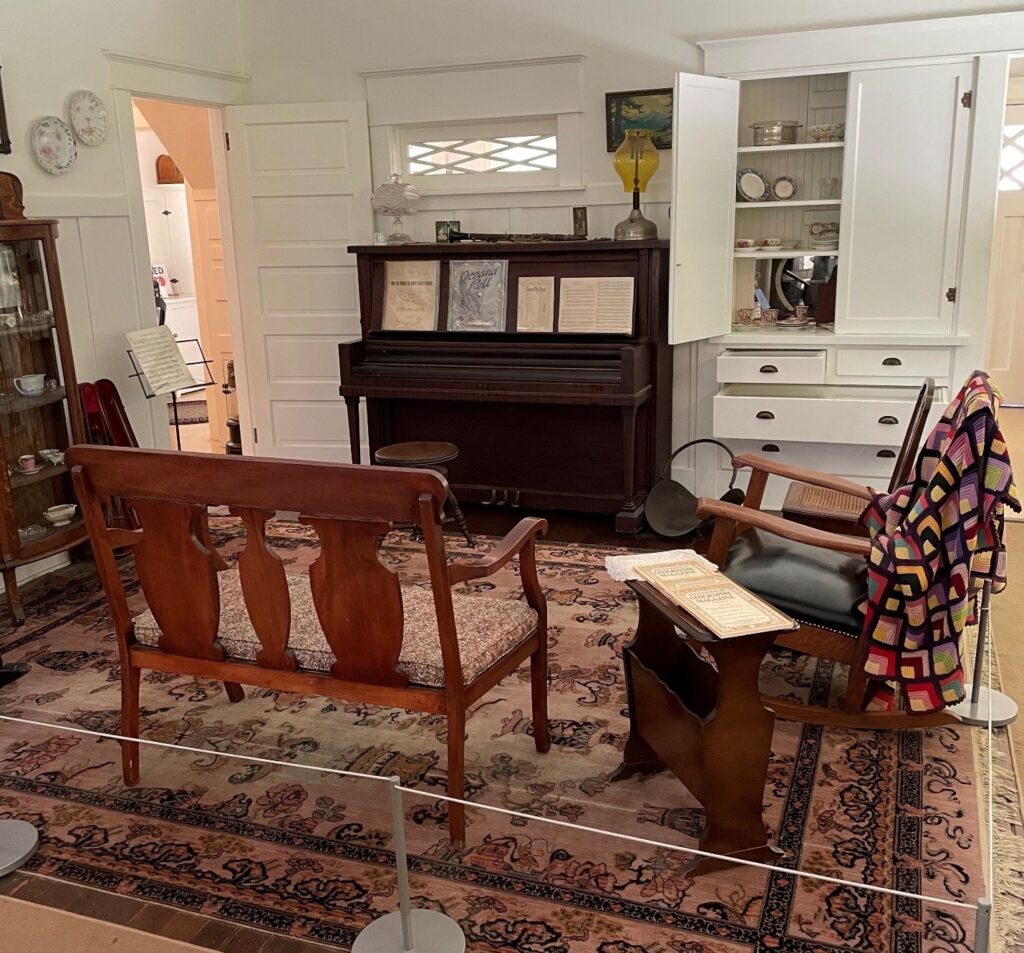
Another view of the living room. The Nixons were a musical family. Richard took lessons at the piano pictured above but also played the clarinet and violin. The National Geographic magazines on the table represent those loaned by his uncle and devoured by Nixon as a boy. Intellectual pursuits were a part of daily life. Frank Nixon encouraged debate between his sons, likely the reason Richard achieved success as a debater and won several championships. His mother, Hannah Milhous, was a devout Quaker and a college graduate. The product of a controlling mother and an abusive father, Nixon developed a ruthless drive to succeed at any price. Often described as a lonely and isolated man, he had few friends.
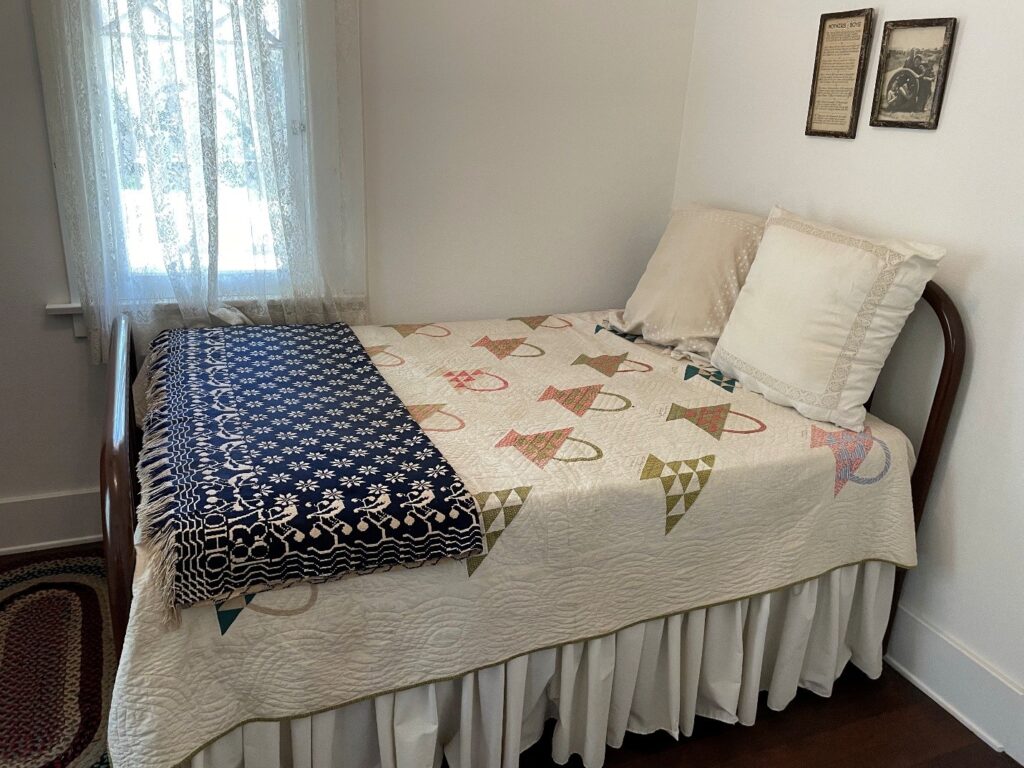
The parents’ bedroom where Richard was born.
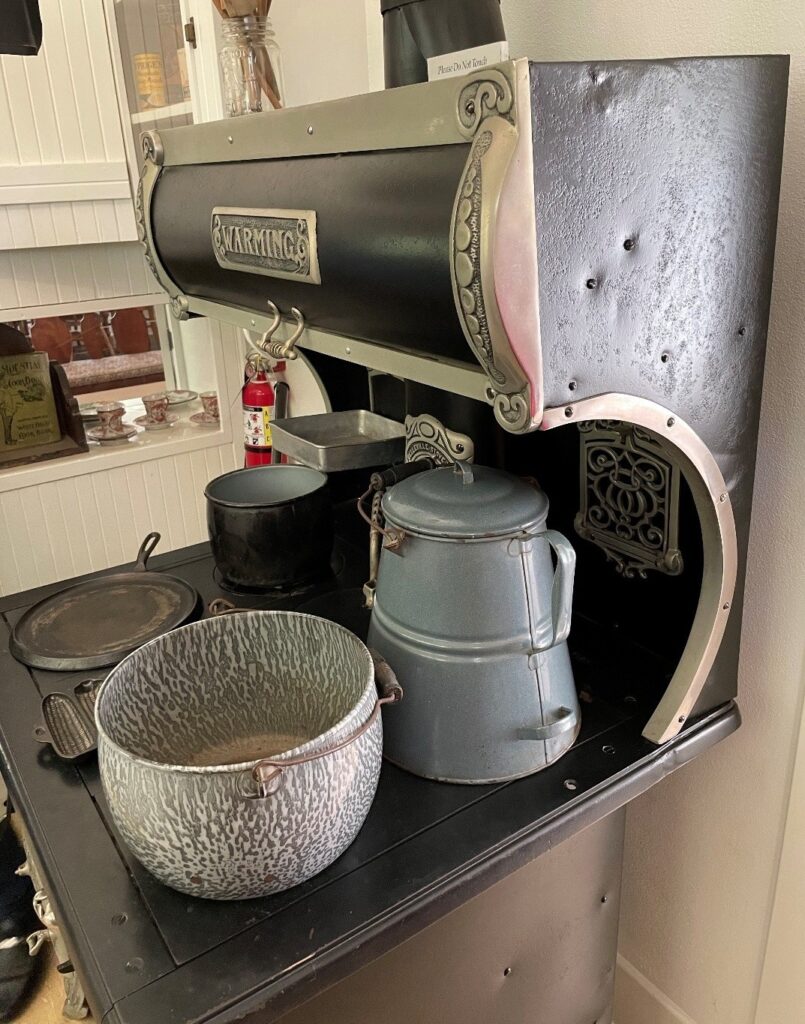
The kitchen was almost too small to get pictures. Here’s the stove.
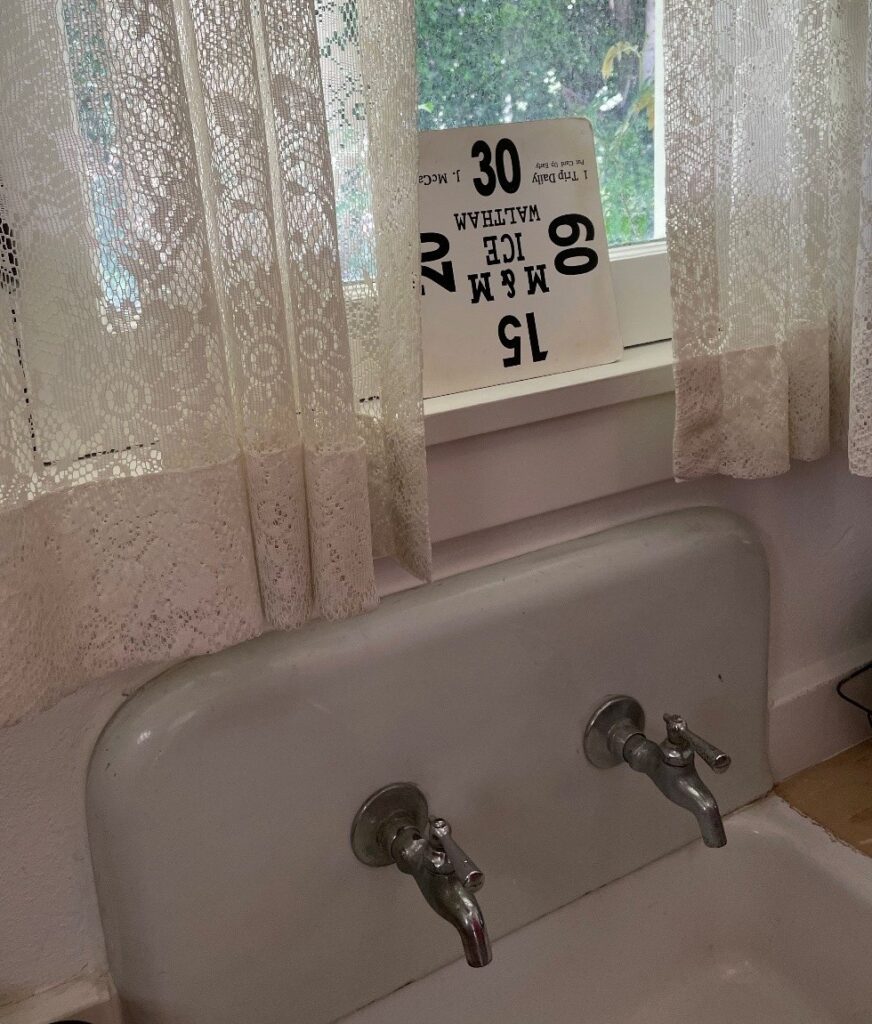
Above the sink is a sign for the ice man. The number at top indicates how many pounds of ice the iceman should deliver. Hey, at least there’s running water.
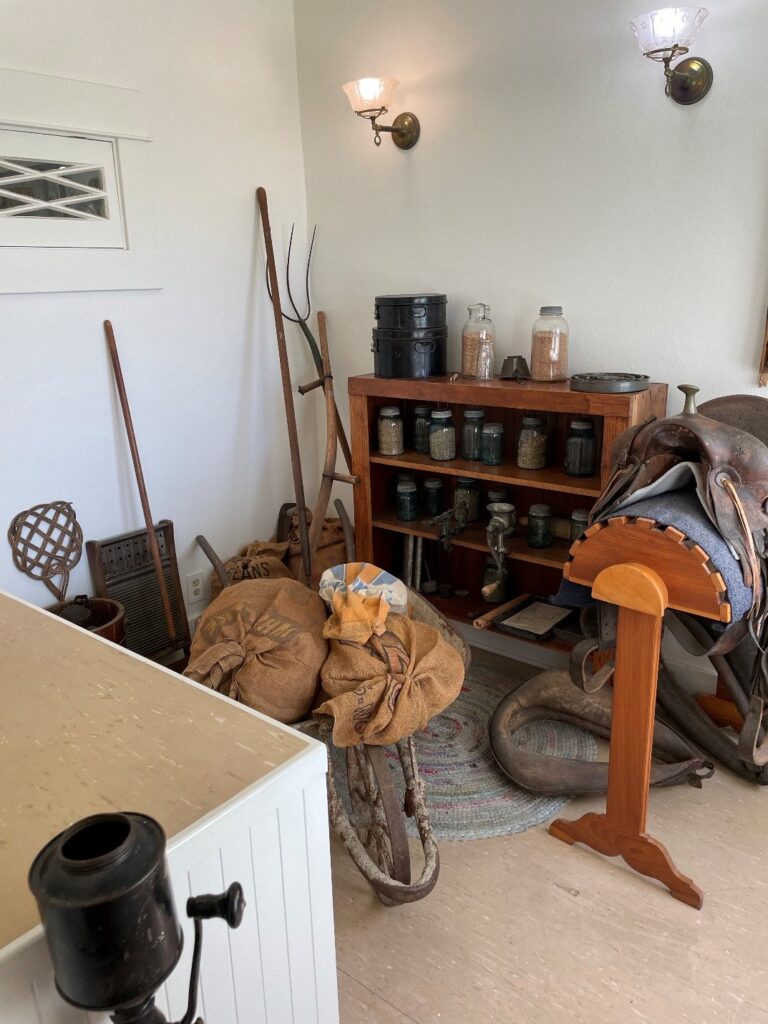
The Nixon boys sometimes used the tiny upstairs as their bedroom, but sometimes used this spare room next to the kitchen.
The Nixons lived in this house until 1922. They moved to Whittier when their farm failed. Eventually selling the largest part of the property to the Yorba Linda School District, a school was constructed on the site. Fortunately, the house proved useful as employee housing.
The school operated on the site until 1988 when it was torn down and the land deeded to the Nixon nonprofit library organization. Original furniture was retrieved from various family members to put on display.
The modest Ancient World exhibit proved disappointing, but the Nixon Library has only recently begun to schedule exhibits. Not one of our more popular presidents, fund-raising for the Nixon Library is an issue.
When funds are plentiful, presidential libraries can do stuff like this:
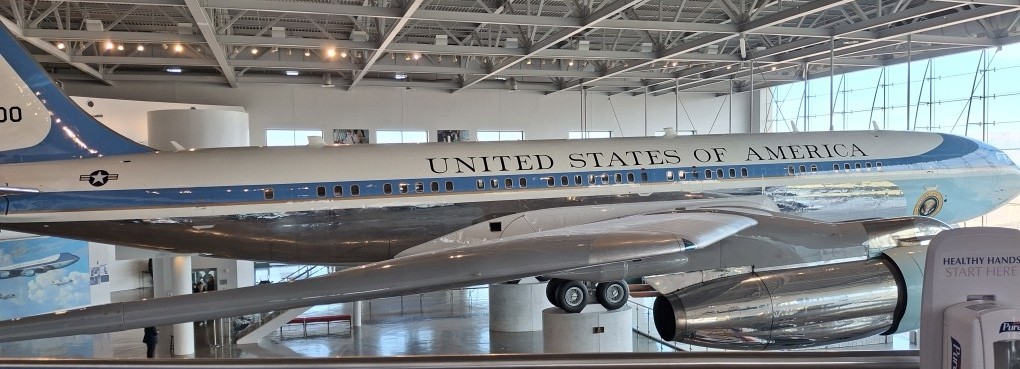
The Reagan era Air Force One.
And this:
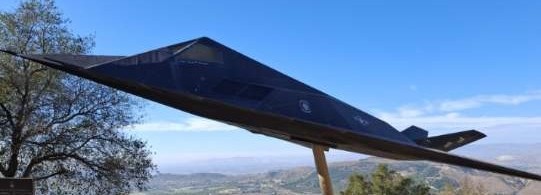
An historic F117 Nighthawk.
We enjoyed our day at the Nixon Museum. Will I ever return? Probably not. But the Reagan Museum Dead Sea Scrolls exhibit beckons.

A wonderful recap of our visit to the Nixon Library! (I didn’t realize you took so many photos—all great!) An enjoyable day with friends!
Jean, I always learn so much from your newsletters. I was unaware of that cemetery and was happy to hear of the efforts to rehabilitate it. I enjoyed your photos of the Nixon library. I’ve visited it as well and your photos really captured it. And, your recipe looks great!